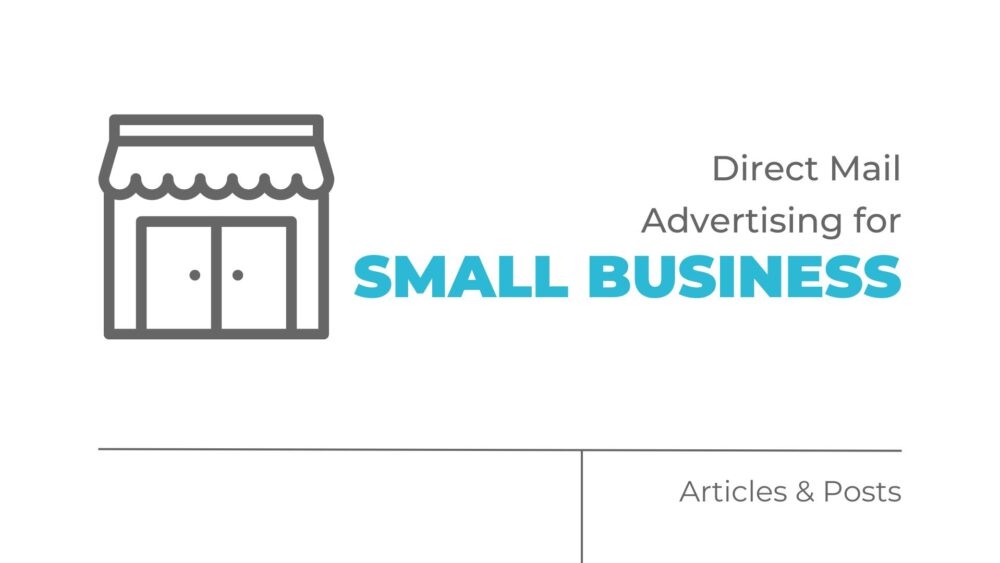If you have a small business, you may be hesitant to consider using direct mail advertising because of the up front costs.
But investing in direct mailing services can be a huge stepping stone in reaching your goals.
Using direct mail advertising for a small business can help you get seen – often for the first time – by people you may otherwise never reach.
In this guide, we’ll discuss what direct mail advertising is, how small businesses can reduce costs, and tips for creating a successful direct mail campaign.
What is Direct Mail Advertising?
Direct mail advertising involves sending physical promotional materials to a targeted group of recipients.
These materials can include postcards, brochures, catalogs, and personalized letters.
The goal is to deliver a tangible message that engages recipients and prompts them to take action.
Companies that use direct mail advertising may benefit from higher engagement rates and a more personal connection with their audience.
Benefits of Direct Mail Advertising
Direct mail advertising offers several benefits, which is why people use it.
It provides a tangible touchpoint, making your message memorable.
It allows for precise targeting and personalization, which can significantly improve response rates.
Moreover, direct mail can complement digital marketing efforts, creating a comprehensive strategy that covers multiple channels.
How Can Small Businesses Reduce the Costs of Direct Mail Marketing?
We know you don’t have all the money in the world.
So here’s our recommendations to help you get the most bang for your buck when it comes to direct mail.
1. Target Your Audience Carefully
One of the best ways to reduce costs is by targeting your audience carefully.
Use data to identify your ideal customers and focus your efforts on them.
This reduces waste and increases the likelihood of a positive response.
2. Use Bulk Mailing Rates
Take advantage of bulk mailing rates offered by postal services.
Sending large quantities of mail at once can significantly reduce postage costs.
Many postal services offer discounts for businesses that meet specific bulk mailing criteria.
3. Opt for Simple Designs
While high-quality materials are important, you don’t need to go overboard with expensive designs.
Simple, effective designs can be just as impactful and are often cheaper to produce.
Focus on clear messaging and strong calls to action.
4. Partner with Local Printers
Partnering with local printers can sometimes result in better deals than using large, national companies.
Local printers may offer competitive rates and personalized service, helping you keep costs down.
5. Utilize Variable Data Printing
Variable data printing allows you to customize each piece of mail without incurring significant additional costs.
This means you can personalize your messages without printing separate batches, making your campaign more efficient and cost-effective.
How Do You Create a Successful Direct Mail Campaign?
Creating a successful direct mail campaign requires careful planning and execution.
Here are some tips to help you get started:
1. Define Your Goals
Start by defining what you want to achieve with your campaign.
Are you looking to drive sales, increase brand awareness, or promote an event?
Clear goals will help you tailor your message and measure success.
2. Identify Your Target Audience
Knowing who you’re trying to reach is crucial.
Use demographic data, purchase history, and other relevant information to identify your target audience.
This ensures your message resonates with the right people.
3. Craft a Compelling Message
Your message should be clear, concise, and compelling.
Focus on the benefits of your product or service and include a strong call to action.
Personalize the message to make it more relevant to the recipient.
4. Design with Impact
A well-designed piece of direct mail stands out.
Use high-quality images, readable fonts, and a clean layout.
Your design should support your message and make it easy for recipients to understand what you’re offering.
5. Include a Clear Call to Action
Your call to action (CTA) should tell recipients exactly what you want them to do.
Whether it’s visiting your website, calling a phone number, or redeeming a coupon, make sure your CTA is clear and easy to follow.
6. Track and Measure Results
Use tracking codes, QR codes, and personalized URLs to measure the success of your campaign.
This data can provide valuable insights into what’s working and what’s not, allowing you to refine your strategy for future campaigns.
At the End of the Day
Direct mail advertising for small business offers numerous benefits, including possible higher engagement rates and a personal connection with your audience.
By carefully targeting your audience, managing costs, and following best practices for creating effective campaigns, small businesses can leverage direct mail to achieve their marketing goals.
Whether you’re looking to drive sales, increase brand awareness, or promote an event, direct mail can be a powerful addition to your marketing strategy.


Comments are closed.